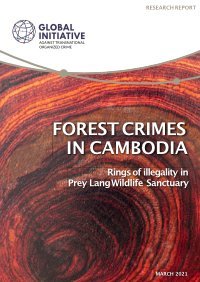Edited by Kristiina Kangaspunta; Ineke Haen Marshall
The careless or illegal exploitation of the natural environment is by no means a recent development. Long before former US Vice President Al Gore’s documentary An Inconvenient Truth made the dangers of the nonchalant and predatory use of our planet’s resources painfully real to large audiences, toxic waste was dumped in rivers and oceans, there was clear felling of forests and timber smuggling, and threatened or protected species (both animals and plants) were transported and traded for profit. Some of this took place locally, some of this crossed national borders. Some of this was perfectly legal, and some of this had been declared illegal either by local, national or international statutes. Sometimes the harm done was obvious to even the most casual observer, but very often it was not. Sometimes it was the work of one individual or a small group, but frequently networks or organized crime groups were involved. Occasionally, an individual, community group or NGO voiced their complaint, but more often than not there was a deafening silence. Now the silence has been broken – for reasons we can only speculate about, but which clearly include the ‘greening’ of politics, the emergence of local and global grassroots environmental justice movements, and the growing concern of large corporations with the damaging public relation effects of being viewed as ‘eco-hostile’. A tipping point has been reached where enough voices speak out loud and urgently to place environmental harm as a high priority item on the policy agenda. The publication before you aims to add a strong voice to the debate. The authors hope to contribute to the articulation of a global research agenda on environmental crime; a research agenda based on commitment to the following three principles: (1) Recognition of the value of evidence–based policy-making (over policies based on expediency, political pressures, or purely economic considerations); (2) Willingness to appreciate the importance of theoretical insights drawn from different disciplines to guide policy, and (3) Concern with balancing human and ecological rights. This Introduction provides the context for this effort.
Turin : UNICRI, cop. 2009. 129p.




















